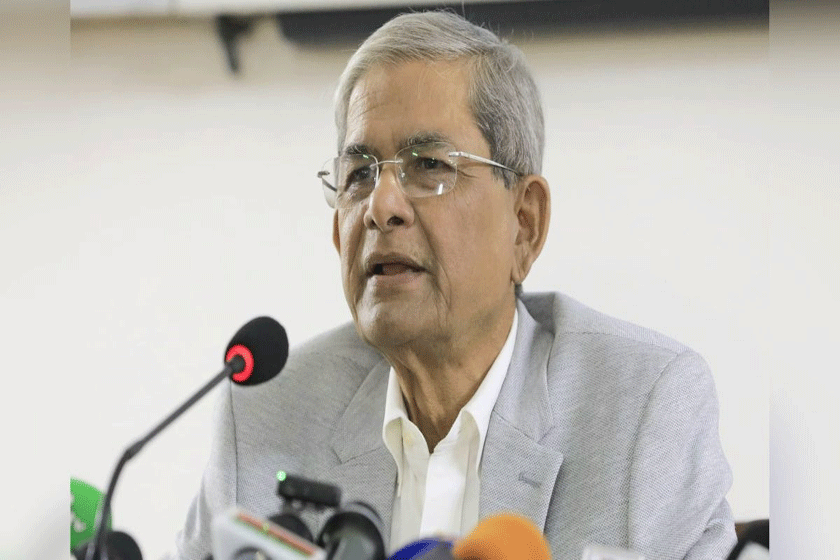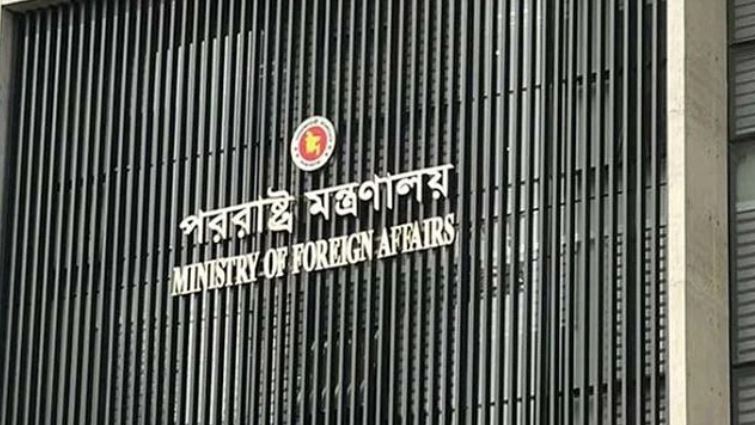
A total of 187 kilometres of roads, 68 metres of bridges and culverts have been damaged by the floods, according to the Local Government Engineering Department. COURTESY
*Agricultural products worth Tk500 crore destroyed in Habiganj and Tk134cr in Lalmonirhat and Kurigram
*Women, children worst sufferers in Sylhet
*Death toll rises to 95
Floods have continued to play havoc on life and properties in the country's northern districts. According to an estimate, agricultural products like paddy, livestock, fisheries, jute, maize and nuts worth around Tk634 crore have been damaged since the deluge started in early May in Habiganj, Lalmonithat and Kurigram.
Habiganj have suffered nearly Tk500 crore loss during the flash-flood in sectors like agriculture, livestock, fisheries, infrastructure and educational institutions, say officials.
The concerned authorities of the government are updating the statistics of losses regularly.
A total of 187 kilometres of roads, 68 metres of bridges and culverts have been damaged by the floods, according to the Local Government Engineering Department.
Shakil Mohammad Faisal, executive engineer of Habiganj Roads and Highways Department, said a total of 29 kilometres of roads have been damaged in Habiganj, Baniachong, Ajmiriganj and Nabiganj upazilas so far.
He added that an estimated amount of Tk150 crore will be required to repair these roads.
Md Ashek Parvez, acting deputy director of Agricultural Extension Department, said 88,054 tons of paddy and vegetables and 225 tons of other crops were damaged due to the flood in the area. “Over 1,03,130 farmers have suffered loss during the flood in the district.”
According to the District Primary Education Office, more than 370 primary schools in the district were inundated and severely damaged.
As many as 83,390 people from 24,330 families of 54 unions of seven upazilas of the district have been affected as per the District Administration sources.
Lalmonirhat, Kurigram
Crops on around 16,383 hectares of land have been damaged due to floods in Lalmonirhat and Kurigram districts. "Aush" paddy, jute, maize, nuts and various vegetables have been damaged in the floodwater. The agriculture department has assessed the damage to be worth Tk 134 crore.
A total of 24,000 farmers have been affected due to the flood in the two districts.
Sahidar Rahman (62), a flood hit farmer of Brahmaputra shoal at Dhanarchar village at Roumari upazila of Kurigram, said he has suffered a loss of about Tk 75,000.
Sahidur had planted the crops with a loan and he is not sure how he will repay the loan. He was not prepared for the flood as it hit in advance, he said.
Afzal Hossain (60), a flood-hit farmer of Teesta shoal at Rajpur village in Lalmonirhat Sadar upazila, said the flood damaged his aush paddy on three-bighas of land and vegetables on four bighas of land. He has incurred a loss of Tk 1.5 lakh.
According to the agriculture department, 15,500 farmers have been affected by the floods in Kurigram. The floods have also resulted in a loss of about Tk 128 crore.
Additionally, crops on 201 hectares of land has been completely damaged in Lalmonirhat. Crops on 182 hectares of land has been partially damaged. It has caused a loss of Tk 6 crore. The number of affected farmers is 8,500.
Abdur Rashid, deputy director of Department of Agricultural Extension (DAE) in Kurigram, said that a list of those affected by the floods had been prepared and sent to the concerned ministry.
The government has not yet said what steps it will take to rehabilitate the affected farmers. However, distribution of fertilisers and seeds as incentives among the affected farmers is going on.
Hamidur Rahman, deputy director of the DAE in Lalmonirhat, said most of the farmers affected by the floods cultivated crops with loans. He hoped that the government will take necessary steps to rehabilitate these farmers.
Women, children worst sufferer in Sylhet
The flood situation in the Sylhet division has left a destructive effect on the lives of its residents. Women and children are the worst victims as of yet, with severe health complications, especially, malnutrition.
Tahmina Akhter (20), who took refuge in Hakaluki High school (at present a flood shelter) with her 15-month-old child, said, "My husband left me a month ago. I took shelter in my father's house with my child but now, it's flooded."
"I'm only eating food that's distributed to the shelter. But I can't feed my baby due to the lack of privacy. It worries me."
Bilasi Begum (40) at the same shelter said, "I've never seen such a flood in my life. In just two days, everything was submerged in water. There was some dry rice in the house, which got wet and by now, they're probably rotten."
Sarada Biswas (45), a resident of Talimpur in Barlekha Upazila in Moulvibazar, said she and her family are currently living on the roadside bridge.
"We have nothing to eat. I was only able to fetch a couple of clothes and my cattle. We had no other place to stay. I'm spending days in my torn, wet clothes."
Popy Begum (18), who took shelter at a centre in Kulaura, said although relief is coming through, hardly any hygiene and sanitary products are being provided. As a result, many girls are facing trouble during their periods at the shelter.
"I'm having to use the same cloth for the last few days," she said.
Sajan Mia of Tanguar Haor said since the floods, they can't focus on child development separately. "I'm not even able to pay attention to my pregnant wife properly."
Pritam Das, coordinator of the Bibeki Tarunyo, a relief-based organisation, said although relief is being provided in different parts of Sylhet, women and children are facing a lack of proper food.
"Parents lament the failure to provide nutritious food for their children. Adequate government support not reaching these areas only make things worse."
"We initially planned to provide relief at Sylhet's Kanaighat. Later we came to know through a friend that no relief has reached three villages in Sylhet's Nawagaon, Pachpara, and Chilla in Paschim Alirgaon union of Gowainghat Upazila," he said.
"For this, we've distributed relief to 600 families in those villages. This is the first time they received relief in six days since the floods hit."
"In our distribution drive, we provided some sanitary pads for teenage girls. Women have been very happy to get these materials," he added.
Dr Mohammad Noore Alam Shamim, assistant director (Disease Control) in the Department of Health (Sylhet) said, "Most women and children feel uncomfortable voicing out what their major needs and concerns are. Hence, they need special attention during floods."
Death toll rises to 95
Flood in Bangladesh claimed three more lives in Mymensingh, Netrokona and Sunamganj in 24 hours till Friday morning, raising the total fatalities to 95.
Of the deceased, two drowned while another died from lightning strike, according to the Directorate General of Health Services.
Among the total deceased, 68 people died by drowning in floodwater, 15 from lightning strikes, two from snake bites, one from diarrhoea, and nine due to other reasons.
The total deaths were recorded from May 17 to June 30. Meanwhile, the Flood Forecasting and Warning Centre of the Bangladesh Water Development Board said that all major rivers in the north-eastern region of the country were in a falling trend, which might continue falling in the next 24 hours.
However, the Brahmaputra River is in a steady state, while the Jamuna River and Padma River are on the rising trend. These rivers may rise in the next 24-48 hours.
The flood situation in Kurigram, Sylhet, Sunamganj, Netrokona, Kishoreganj and Brahmanbaria districts may improve in the next 24 hours, it added in their latest report.












0 Comments